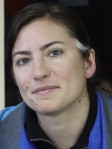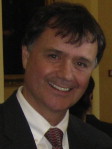

Good oral health is increasingly recognized today as an integral part of the total health care picture that helps ensure well-being. Health care providers are beginning to understand that poor oral health affects the course of many systemic diseases and additionally has a strong association in the development of other diseases. Consequently, poor oral health is considered a risk factor for poor overall health.
As advances in medicine have extended the life span of our older population, it is very important for us to remember the words of President John F. Kennedy, “it is not enough for a great nation to have added new years to life. Our objective must be to add new life to those years.” Seniors can expect to live longer today than ever before. The burden of oral diseases tends to increase with age. With the evolution and developments within the science and understanding of geriatric dentistry, early prevention and treatment will reduce oral disease and aid in the management of systemic diseases. The former Surgeon General David Satcher emphasized the very important need to reconnect the mouth to the rest our body and to see it as an integral part of total health.
Senior oral health care must be interdisciplinary and interprofessional to provide the most efficient and effective results. Everyone involved in the overall treatment for the elderly has an important piece of the health care puzzle to manage through education, communication, and assessment. As patients age, dentists are continuously challenged to alter their treatment plans to provide rational care to accommodate physical and mental health deterioration.
This issue, “Geriatric Dentistry,” recognizes the challenges that our aging population face and offers new evidence-based insights on senior oral health care. Dr Chester W. Douglass and Monik C. Jiménez begin their article by updating us on the aging geriatric population, demographics, oral health care utilization, and recommendations to connect oral health care to primary care. Today’s older adults are tremendously varied in health status; Drs Alan P. Abrams and Lisa A. Thompson walk us through normal physiologic changes in systemic and oral health that occur with aging to remind us of the challenges aging alone presents, in the absence of disease. Drs Ella Oong and Gregory An highlight the importance of comprehensive diagnosis and treatment planning and demonstrate how it differs from treatment planning in younger cohorts.
As the geriatric population ages, becomes more diverse, lives longer, retains their teeth longer, and presents with multiple chronic health conditions, we face an increase in oral health disparities. Drs Paula K. Friedman, Laura B. Kaufman, and Steven Karpas provide data on disparities in dental decay and tooth loss, the consequence of these disparities, and the challenges facing the dental workforce to treat this population. As oral health research continues to provide links between oral and systemic health, Drs Frank A. Scannapieco and Kenneth Shay explain the pathogenesis and risk factors of aspiration pneumonia and its prevalence in older adults and provide interventions to reduce the risk in this vulnerable population. With the geriatric population among the highest users of prescription medications, Drs Athena Papas and Mabi Singh consider the clinical implications of polypharmacy and provide us with insight into how salivary function affects oral health of older adults. In the article, “Oral and Systemic Health,” Drs Mary Tavares, Kari Lindefjeld, and Laura San Martin pull together many of the concepts that have been discussed in previous articles and provide clinical oral health recommendations for several of the most common systemic diseases. Drs Leonard Brennan and Jason Strauss cover the topic of cognitive impairment relative to oral health and stress the importance of early intervention and education by caregivers in the care of the oral and overall health of older adults.
We close this issue with two exciting articles that provide strategies and innovation in education and health care delivery to address the disparities in oral health care for older adults. First, Drs Maria C. Dolce, Nona Aghazadeh-Sanai, Shan Mohammed, and Terry T. Fulmer write about interprofessional curricula and programs that are effective in introducing oral health to primary care and allied health care and the importance of these programs in addressing health disparities. Finally, Lynn A. Bethel and Drs Esther E. Kim, Charlie M. Seitz, and Brian J. Swann cover trends in dental education and practice and highlight several innovative approaches that address issues of access to care and bridging the gap between dental and medical education and practice.
In summary, it is our hope that this issue will improve the knowledge of health care providers that participate in senior health and help promote the importance of a team-based approach to early treatment and management of disease through rational planning. Our goal has been to update readers and clinicians on topics in geriatric dentistry, provide recommendations for caring for older adults, and highlight shifts in oral health care delivery through innovation and collaboration. Ultimately, an integrated approach to care in geriatric dentistry improves the dignity and quality of life for our aging population.
We want to thank all the authors for collaborating on this issue and bringing relevant and evidence-based information to the field of geriatric dentistry.
Stay updated, free dental videos. Join our Telegram channel

VIDEdental - Online dental courses


